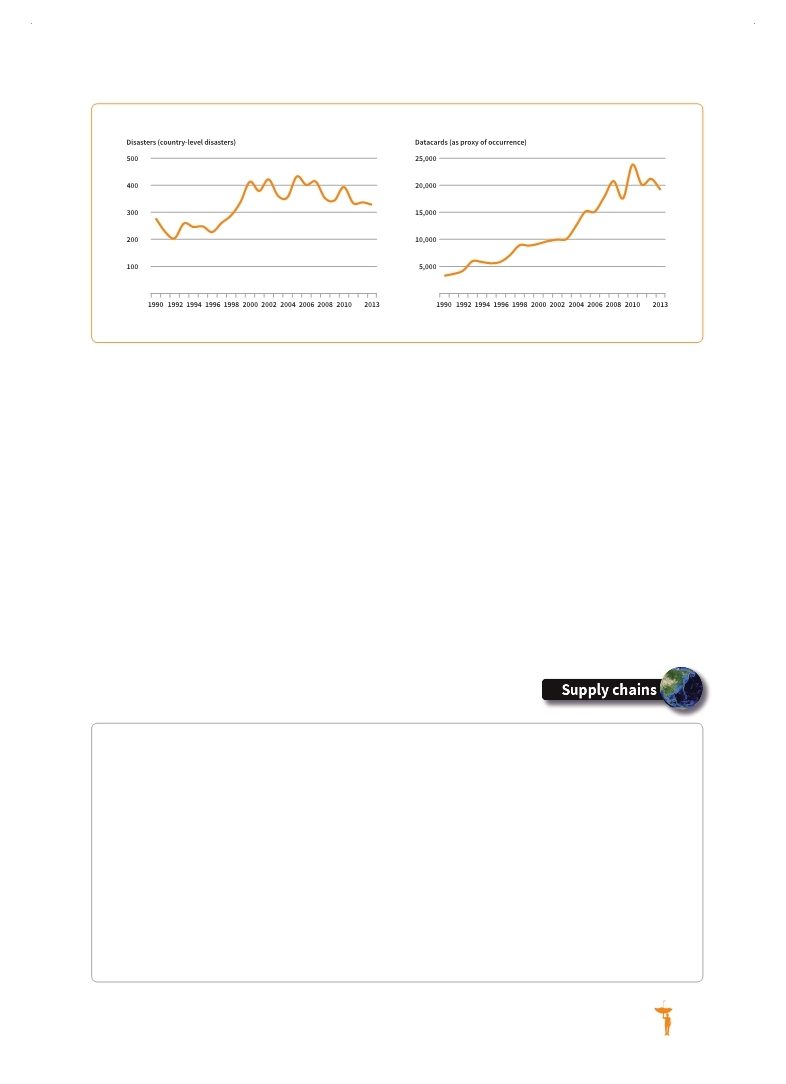 |
Global Assessment Report on Disaster Risk Reduction 2015
Making development sustainable: The future of disaster risk management |
 |
Global Assessment Report on Disaster Risk Reduction 2015
Making development sustainable: The future of disaster risk management |
|
|

135
highly on the radar screens of senior executives in global corporations.
Whether risk awareness is maintained over the medium and long term would seem to depend on disaster frequency. When intensive disasters are very infrequent, as in the case of Indian Ocean tsunamis, inter-generational awareness of disaster risks may fade. To cite an extreme example, it is highly doubtful whether earthquake risk awareness is still strong in the south-east of England as a result of the Canterbury earthquake on
21 May 1382. As a result of migration, populations that may have lived in an area for decades are unaware of the risks manifested in historical disasters hundreds of years ago. In addition, increasing geographical mobility now means that people frequently live, work and travel far from the areas and disaster risks they are familiar with.
As highlighted by the case of Ratnapura, extensive disasters clearly shape risk awareness in a far more tangible way in the localities where they
(Source: UNISDR with data from EM-DAT and national disaster loss databases.)
Figure 7.2 Disaster records in global (left) and national databases (right)
Box 7.2 Increasing awareness of disaster and climate risks
Around 70 per cent of companies responding to a recent survey by the Carbon Disclosure Project identified clear business continuity risks to their supply chains and thus risks to their revenue streams due to climate change and the resulting extreme weather events (CDP, 2013
CDP (Carbon Disclosure Project). 2013,Reducing Risk and Driving Business Value, CDP Supply Chain Report 2012-13. London.. . Local surveys of a similar nature reflect these global results and show that awareness of climate risk in particular is rising across the globe. For example, of more than 300 businesses responding to an annual survey on climate change in Hong Kong, 82 per cent identified disruptions due to extreme weather as critical risks, compared to “only” 44 per cent in 2010 (BEC CCBF, 2014 BEC (Business Environment Council) and CCBF (Climate Change Business Forum). 2014,2013 Hong Kong Business Survey on Energy Efficiency & Climate Change, Executive Summary.. . However, smaller companies may be less aware of the potential scale of climate risks (Ceres, 2013 Ceres. 2013,Insurer Climate Risk Disclosure Survey: 2012 Findings & Recommendations, March 2012. Authored by Sharlene Leurig and Andrew Dlugolecki. Boston.. . |
 
Page 1Page 10Page 20Page 30Page 40Page 50Page 60Page 70Page 80Page 90Page 100Page 110Page 120Page 125Page 126Page 127Page 128Page 129Page 130Page 131Page 132Page 133Page 134Page 135Page 136->Page 137Page 138Page 139Page 140Page 141Page 142Page 143Page 144Page 145Page 146Page 147Page 148Page 149Page 150Page 160Page 170Page 180Page 190Page 200Page 210Page 220Page 230Page 240Page 250Page 260Page 270Page 280Page 290Page 300Page 310
|
|
 
|
 
|
